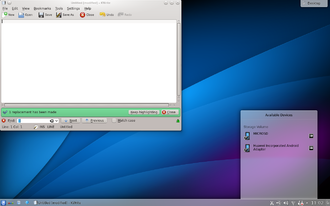Look and feel

The term look and feel (LAF; dt. Appearance and handling, "feel", impression) describes standardized design aspects in software with a graphical user interface or on websites ( web design ). This includes, for example, the choice of colors, the layout of graphic elements and their reaction to user inputs, fonts , operation via the keyboard , etc.
The look and feel is usually standardized by manufacturers or consortia and enables a certain degree of recognition of software from different manufacturers or operating systems . For example, the function for closing a window is mostly determined by the look and feel of the operating system. In Windows it is activated by clicking on the "X" in the upper right corner of the window, while in OS X the same function is activated by clicking on the red circle in the upper left corner of the window.
The more complex a software is, the more important it is to be intuitive to use. If the look and feel is well thought out, users will find their way around better and can use the program efficiently without first having to learn all functions individually; they are comfortable with the program.
In addition, many interfaces for creating user interfaces offer the possibility of changing the presentation by using 'themes'.themes). This can be the user-specific selection of color schemes, fonts, font sizes or styles, but also the complete graphic change of the graphic user interface (e.g. the simulation of the user interface of another operating system).
Examples of interchangeable topics are the user interfaces of macOS and Mac OS Classic , Windows and some window managers under Linux .
In the area of programming languages with graphic libraries for programming graphic user interfaces, Swing , as a cross-platform API , should be mentioned.